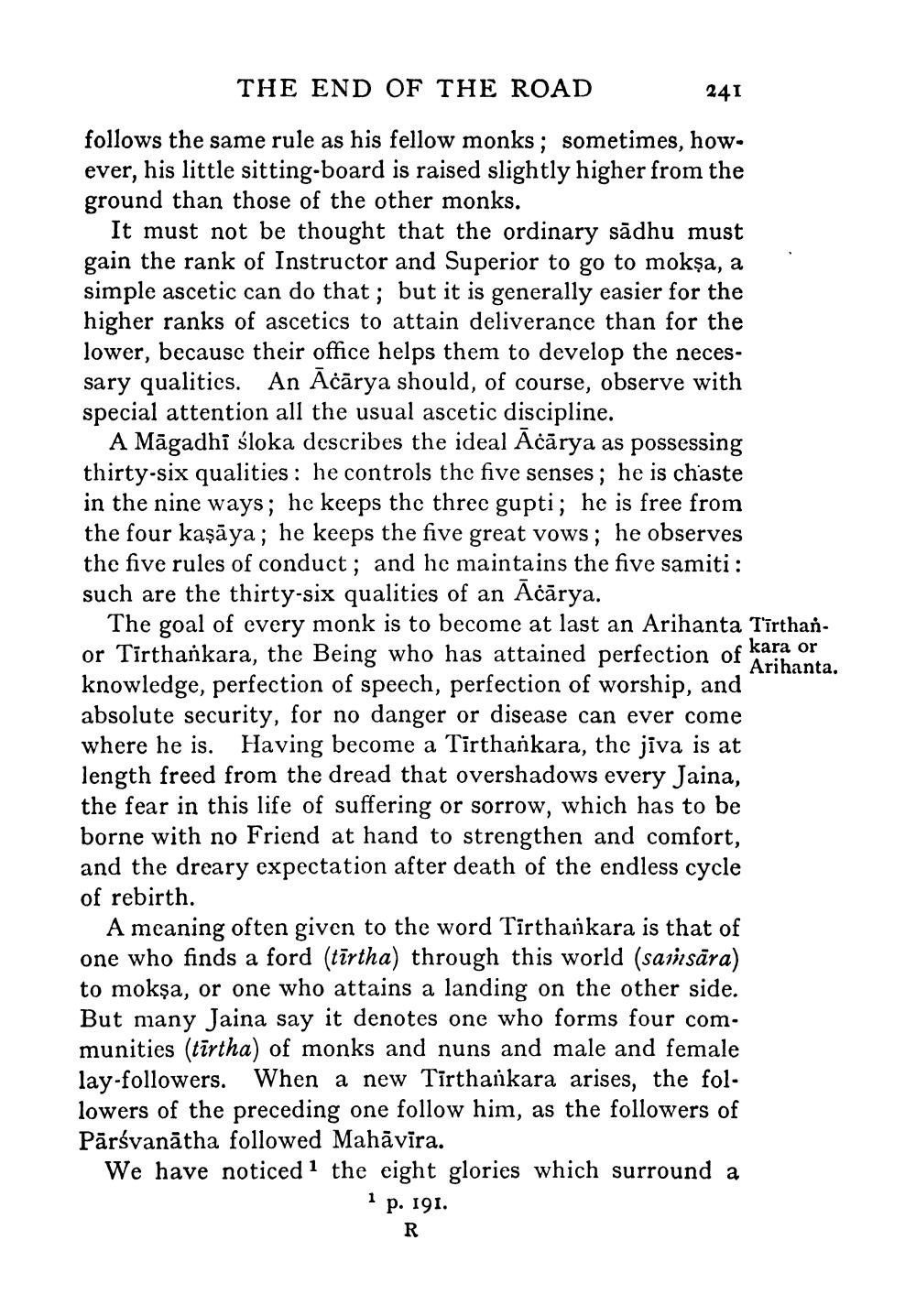________________
THE END OF THE ROAD
241
follows the same rule as his fellow monks; sometimes, however, his little sitting-board is raised slightly higher from the ground than those of the other monks.
It must not be thought that the ordinary sādhu must gain the rank of Instructor and Superior to go to mokşa, a simple ascetic can do that; but it is generally easier for the higher ranks of ascetics to attain deliverance than for the lower, because their office helps them to develop the necessary qualities. An Ācārya should, of course, observe with special attention all the usual ascetic discipline.
A Māgadhi śloka describes the ideal Ācārya as possessing thirty-six qualities : he controls the five senses; he is chaste in the nine ways; he keeps the three gupti; he is free from the four kaşāya; he keeps the five great vows; he observes the five rules of conduct; and he maintains the five samiti: such are the thirty-six qualities of an Acārya.
The goal of every monk is to become at last an Arihanta Tīrthanor Tirthankara, the Being who has attained perfection of kara or
Arihanta. knowledge, perfection of speech, perfection of worship, and absolute security, for no danger or disease can ever come where he is. Having become a Tīrthankara, the jiva is at length freed from the dread that overshadows every Jaina, the fear in this life of suffering or sorrow, which has to be borne with no Friend at hand to strengthen and comfort, and the dreary expectation after death of the endless cycle of rebirth.
A meaning often given to the word Tirthankara is that of one who finds a ford (tīrtha) through this world (sainsāra) to mokşa, or one who attains a landing on the other side. But many Jaina say it denotes one who forms four communities (tīrtha) of monks and nuns and male and female lay-followers. When a new Tirtharkara arises, the followers of the preceding one follow him, as the followers of Pārsvanātha followed Mahāvīra. We have noticed 1 the eight glories which surround a
1 p. 191.
R




